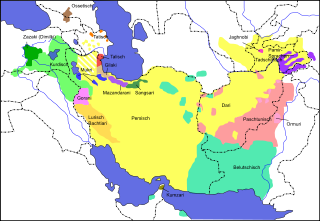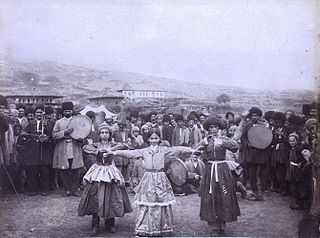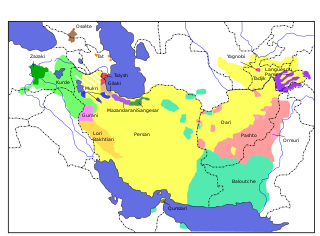
Cultural genocide or culturicide is a concept described by Polish lawyer Raphael Lemkin in 1944, in the same book that coined the term genocide. The destruction of culture was a central component in Lemkin's formulation of genocide. Though the precise definition of cultural genocide remains contested, the United Nations makes it clear that genocide is "the intent to destroy a national, ethnic, racial or religious group... it does not include political groups or so called 'cultural genocide'" and that "Cultural destruction does not suffice, nor does an intention to simply disperse a group" thus this is what "makes the crime of genocide so unique". While the Armenian Genocide Museum defines culturicide as "acts and measures undertaken to destroy nations' or ethnic groups' culture through spiritual, national, and cultural destruction", which appears to be essentially the same as ethnocide. The drafters of the 1948 Genocide Convention initially considered using the term, but later dropped it from inclusion.

Zaza or Zazaki is a Northwestern Iranian language spoken primarily in eastern Turkey by the Zazas, who are commonly considered as Kurds, and in many cases identify as such. The language is a part of the Zaza–Gorani language group of the northwestern group of the Iranian branch. The glossonym Zaza originated as a pejorative and many Zazas call their language Dimlî.
This article focuses on the status of ethnic minorities in contemporary Iran.

The Talysh people or Talyshis, Talyshes, Talyshs, Talishis, Talishes, Talishs, Talesh are an Iranian ethnic group, with the majority residing in Azerbaijan and a minority in Iran. They are the indigenous people of the Talish, a region on the western shore of the Caspian Sea shared between Azerbaijan and Iran. The main city of the Talysh people and their homeland is Lankaran, the majority of the population of which is ethnically Talysh. They speak the Talysh language, one of the Northwestern Iranian languages. The majority of Talyshis are Shiite Muslims.

The Zazas are a people in eastern Turkey who traditionally speak the Zaza language, a western Iranian language written in the Latin script. Their heartland consists of Tunceli and Bingöl provinces and parts of Elazığ, Erzincan and Diyarbakır provinces. Zazas generally consider themselves Kurds, and are often described as Zaza Kurds by scholars.

The peoples of the Caucasus, or Caucasians, are a diverse group comprising more than 50 ethnic groups throughout the Caucasus.

Talysh-Mughan, officially known as the Talysh-Mughan Autonomous Republic, was a short-lived autonomous republic in Azerbaijan that lasted from June to August 1993.

The Kurdish population is estimated to be between 30 and 45 million. Most Kurdish people live in Kurdistan, which today is split between Iranian Kurdistan, Iraqi Kurdistan, Turkish Kurdistan, and Syrian Kurdistan.

Kurdistan Uezd, also known colloquially as Red Kurdistan, was a Soviet administrative unit within the Azerbaijan SSR that existed for six years from 1923 to 1929 and included the districts of Kalbajar, Lachin, Qubadli and part of Jabrayil. It was part of Azerbaijan SSR, with the administrative center being in Lachin. It was briefly succeeded by the Kurdistan Okrug from 30 May to 23 July 1930.

Mahmudali Chehregani is an Iranian Azerbaijani political activist, born in Shabestar, East Azarbaijan Province, Iran, in 1958. After the expulsion of the South Azerbaijan National Liberation Movement) by Piruz Dilenchi, he founded the Southern Azerbaijan National Awakening Movement, a political group that claims to represent the interests of Iran's estimated 12 to 18.5 million Azerbaijani minority. Chehregani was a professor of linguistics at Tabriz University.
Kurds have had a long history of discrimination perpetrated against them by the Turkish government. Massacres have periodically occurred against the Kurds since the establishment of the Republic of Turkey in 1923. Among the most significant is the massacre that happened during the Dersim rebellion, when 13,160 civilians were killed by the Turkish Army and 11,818 people were sent into exile. According to McDowall, 40,000 people were killed. The Zilan massacre of 1930 was a massacre of Kurdish residents of Turkey during the Ararat rebellion, in which 5,000 to 47,000 were killed.

This article focuses on ethnic minorities in the Republic of Azerbaijan.

Kurdish nationalism is a nationalist political movement which asserts that Kurds are a nation and espouses the creation of an independent Kurdistan from Iran, Iraq, Syria, and Turkey.

The Kurds in Armenia, also referred to as the Kurds of Rewan, form a major part of the historically significant Kurdish population in the post-Soviet space, and live mainly in the western parts of Armenia.
The majority of the population of Iran consists of Iranic peoples. The largest groups in this category include Persians and Kurds, with smaller communities including Gilakis, Mazandaranis, Lurs, Tats, Talysh, and Baloch.

In Turkey, xenophobia and discrimination are present in its society and throughout its history, including ethnic discrimination, religious discrimination and institutional racism against non-Muslim and non-Sunni minorities. This appears mainly in the form of negative attitudes and actions by some people towards people who are not considered ethnically Turkish, notably Kurds, Armenians, Arabs, Assyrians, Greeks, Jews, and peripatetic groups like Romani people, Domari, Abdals and Lom.
Mamed Iskenderov was the chairman of the Council of Ministers of the Azerbaijan Soviet Socialist Republic from 10 July 1959 to 29 December 1961. He was a member of the Communist Party.

The Talysh National Movement is a Talysh movement created in 2007 in the Netherlands, where part of the Talysh leadership lives in exile. Many of the movement's members had previously participated in the formation of the Talysh-Mughan Autonomous Republic in 1993, including board member Alikram Hummatov.
Talysh people were subjected to forced assimilation policy in Azerbaijan SSR. The policy was carried out jointly with the creation and propagation of the narratives by the authorities of the Azerbaijan SSR and Soviet ethnographers, alleging the "complete and voluntary assimilation of Talysh people into Azerbaijanis" in Soviet Azerbaijan. The narrative was created to justify the assimilation policy of the leadership of the Azerbaijan SSR towards the Talysh people and was distributed through various means, including encyclopedias, maps and textbooks. A similar policy was also pursued in relation to the Tats, Georgian-Ingiloy and other peoples of the Azerbaijan SSR.
Azerbaijan has had a deliberate policy of forced assimilation of ethnic minorities since Soviet times and up to the present. Non-Turkic peoples, such as Talyshis, Lezgins, Tats and others have been subjected to forced Azerbaijanization (Turkification).













